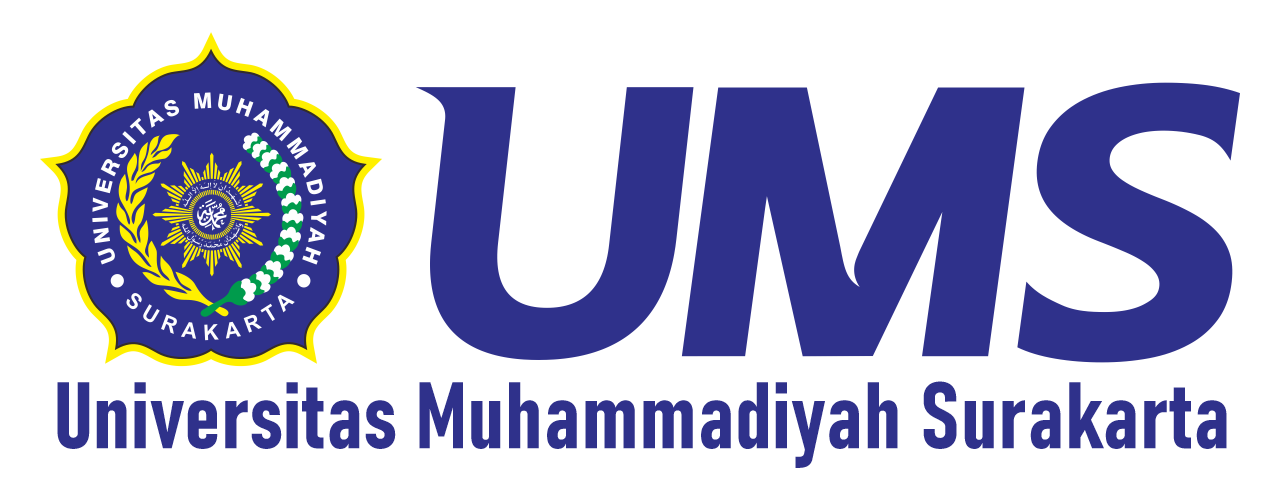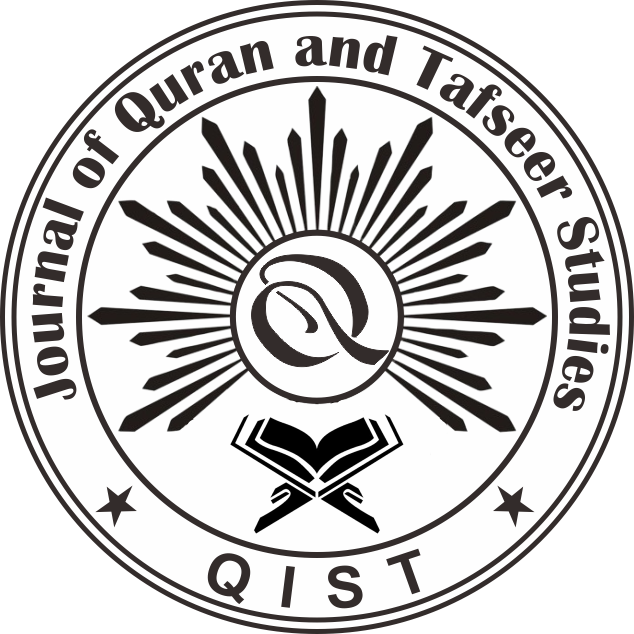Integrating Classical Qur’anic Exegesis and Modern Physiognomy: A Hermeneutical Analysis of Human Nonverbal Signals in Mafatih al-Ghaib
DOI:
https://doi.org/10.23917/qist.v4i2.13306Keywords:
Physiognomic Exegesis, Qur'anic semiotics, Gestures, Mafatihul GhaibAbstract
This research delves into the idea of physiognomy as a means of interpreting human nonverbal cues within the context of the Qur'an and Fakhruddin al-Razi's commentary in Mafātihul Ghaib. Traditionally considered a pseudo-science, physiognomy is reimagined here as a link between the physical and spiritual aspects of human expression. The study addresses a gap in prior research, which often confines nonverbal analysis in the Qur'an to linguistic or semiotic aspects, neglecting psychological and spiritual dimensions. Employing a qualitative library research method, the study investigates nine Qur'anic verses that depict facial expressions, gestures, and bodily signals through al-Razi's hermeneutical perspective. The results indicate that al-Razi consistently views the human body as a communicative entity that expresses internal states-such as faith, arrogance, sorrow, and joy-through nonverbal cues that resonate with divine communication. By integrating al-Razi's interpretations with contemporary nonverbal communication theories, the study highlights an epistemological continuity between classical tafsir and cognitive science. This study aims to analyze how al-Razi interprets nonverbal human signals in the Qur'an and to connect his interpretation with modern cognitive science.
References
[1] S. M. Al-Azzawi, A. Pandian, and S. K. Al-Saaidi, "A Semiotic Analysis of the Body Language With Reference to the Facial Expressions in Selected Quranic Verses," IRA Int. J. Educ. Multidiscip. Stud. (ISSN 2455-2526), vol. 3, no. 2, pp. 207-222, 2016, doi: https://doi.org/10.21013/jems.v3.n2.p8.
[2] Ahmad Tamrin Sikumbang, Fairus, Muhammad Aminullah, Fakhri Yusuf, and Farhan Indra, "Kinesic Communication in the Qur'an (Research of Kinesic Verses in the Facial Region in the Qur'an)," J. Namibian Stud. Hist. Polit. Cult., vol. 33, pp. 882-904, 2023, doi: https://doi.org/10.59670/jns.v33i.543.
[3] C. J. Finelli and F. de Fruyt, "Facing faces: Studies on the cognitive aspects of physiognomy," J. Pers. Soc. Psychol., vol. 78, no. 5, pp. 837-852, 2000, [Online]. Available: http://www.scopus.com/inward/record.url?eid=2-s2.0-0034183469&partnerID=40&md5=9ff093dc39ca1af4242e4a531ed28b0d
[4] R. Twine, "Physiognomy, Phrenology and the Temporality of the Body," Body Soc., vol. 8, no. 1, pp. 67-88, 2002, doi: https://doi.org/10.1177/1357034X02008001004.
[5] A. I. Oppenheim, Physiognomy Made Easy. London: Simpkin, Marshall, Hamilton, Kent & Co., Ltd, 1900.
[6] S. Swain, "Seeing the Face, Seeing the Soul. Polemon's Physiognomy from Classical Antiquity to Medieval Islam.," Aestimato, vol. 5, pp. 225-233, 2008, doi: https://doi.org/10.1017/s007543580000191x.
[7] I. F. Al-Razi, Al-Firasah Daliluka ila Ma'rifati Akhlaq An-Nas wa Thabai'ihim wa Ka'annahum Kitabun Maftuh. Madinah: Al-Madinah Al-Munawwarah.
[8] A. Kendon, "Gesture and Anthropology : Notes for an Historical Essay," John Benjamins Publ. Co., no. April, 2021, doi: https://doi.org/10.1075/gest.00041.ken.
[9] H. Hilal, "Firāsah as a Basic Condition for Achieving Justice in the Judiciary : An Appraisal of the Views of Ibn Qayyim al-Jawziyyah," Islam. Stud., vol. 63, no. 4, pp. 489-506, 2024.
[10] M. Nurman and Syafrudin, "Menakar Nilai Kritis Fakruddin Al-Razi dalam Tafsir Mafatih Al-Ghayb," Al-Tadabbur J. Ilmu Al-Qur'an dan Tafsir, vol. 6, no. 1, pp. 53-80, 2021, doi: https://doi.org/10.30868/at.v6i01.1308.
[11] J. Gerwing and S. Li, "Social Science & Medicine Body-oriented gestures as a practitioner ' s window into interpreted communication," Soc. Sci. Med., vol. 233, no. May, pp. 171-180, 2019, doi: https://doi.org/10.1016/j.socscimed.2019.05.040.
[12] I. M. Neama and H. A. M. Al-husseini, "A Linguistic Study of Facial Expressions in Selected Quranic Verses," J. Educ. Coll. Wasit Univ., vol. 2, no. 44, pp. 705-726, 2021.
[13] M. P. Kahramonovich, "Types Of Facial Expressions In The Holy Qur ' an," J. Pendidik. Islam, vol. 1, no. 4, pp. 1-6, 2024.
[14] A. L. Perdana, "Facial Expression Recognition of Al-Qur ' an Memorization Students Using Convolutional Neural Network," J. Syst. Comput. Enginering, vol. 6, no. 1, pp. 35-44, 2025.
[15] M. Rawanita, "Scientific Interpretation and Its Significance in the Development of Science," ISTIFHAM J. Islam. Stud., vol. 02, no. 3, pp. 227-237, 2024, doi: https://doi.org/10.71039/istifham.v2i3.70.
[16] H. B. Laksno and F. Khair, "Teori Visual Kisah Al-Qur'an Perspektif Psikologi," J. Stud. Al-Qur'an dan Tafsir, vol. 2, no. 2, pp. 191-215, 2023, doi: https://doi.org/10.59005/jsqt.v2i2.245.
[17] F. La Manna, "Physiognomics BT - Glossary of Morphology," F. Vercellone and S. Tedesco, Eds., Cham: Springer International Publishing, 2020, pp. 407-411. doi: https://doi.org/10.1007/978-3-030-51324-5_93.
[18] E. Lelic, "Physiognomy ('ilm-i firāsat) and Ottoman Statecraft: Discerning Morality and Justice," Arabica, vol. 64, no. 3, pp. 609-646, 2017, doi: https://doi.org/10.1163/15700585-12341456.
[19] M. Á. L. Romero, "The Female Physiognomy Through Elucidation of The Secrets of Lawful Intercourse of Al-Shayzarī (XIII); La Fisiognomía Femenina A Través Del Manifiesto De Los Secretos Del Coito De Al-Shayzarī (XIII)," Fortunatae, vol. 33, no. 1, pp. 161 - 172, 2021, doi: https://doi.org/10.25145/j.fortunat.2021.33.06.
[20] A. Gasimova, "Qur'ānic Symbolism of the Eyes in Classical Azeri Turkic Poetry," Oriens, vol. 43, pp. 101-153, 2015, doi: https://doi.org/10.1163/18778372-04301005.
[21] A. Moretti, Mediterranean Rhinoplasty. 2022. doi: https://doi.org/10.1007/978-3-031-05551-5_2.
[22] M. Fatih, "Konsep Keserasian Al-Qur'an Dalam Tafsir Mafatihul Ghaib Karya Fakhruddin Ar-Razi: Perspektif Ilmu Munasabah," PROGRESSA J. Islam. Relig. Instr., vol. 6, no. 2, pp. 1-18, 2022, doi: https://doi.org/10.32616/pgr.v6.2.419.1-18.
[23] B. Subagiya, "Ilmuan muslim polimatik di abad pertengahan," Ta'dibuna J. Pendidik. Islam, vol. 11, no. 1, p. 112, 2022, doi: 1 https://doi.org/0.32832/tadibuna.v11i1.7075.
[24] F. Griffel, "al-Rāzī, Fakhr al-Dīn," Encycl. Mediev. Philos., pp. 1645-1651, 2020, doi: https://doi.org/10.1007/978-94-024-1665-7_164.
[25] N. Nasiri, "Puncak Prestasi Thariqah Mutakallimin Perspektif Pakhruddin ar-Razi," J. Keislam., vol. 3, no. 2, pp. 159-170, 2020, doi: https://doi.org/10.54298/jk.v3i2.3153.
[26] N. Sinai, "Book Review Razi: Master of Qur'anic Interpretation and Theolpgical Thinking," J. Islam. Stud., vol. 28, no. 3, pp. 369-374, 2017, doi: https://doi.org/10.1093/jis/etx043.
[27] A. M. A. R. Al-Balushi and M. K. Al-Janabi, "Mukhālafāt Al-Imām Al-Rāzī Li Abī Muslim Al-Aṣfahānī fī Tafsīr Sūrah Maryam min Khilāl Al-Tafsīr Al-Kabīr," Qur'anica, vol. 16, no. 2, pp. 446-485, 2024.
[28] R. I. R. Limbong et al., "A Fair Leader Perspective Buya Hamka (Review of the Word Ulil Amri in Surah An-Nisa: 59)," QiST J. Quran Tafseer Stud., vol. 2, no. 2, pp. 220-237, 2023, doi: https://doi.org/10.23917/qist.v2i2.1308.
[29] I. F. Al-Razi, Tafsir Al-Kabir Juz 8, 1st ed. Kairo: Al-Mathba'ah Al-Bahiyyah Al-Mishriyyah, 1908.
[30] I. F. Al-Razi, Tafsir Al-Kabir Juz 18, 1st ed. Kairo: Al-Mathba'ah Al-Bahiyyah Al-Mishriyyah, 1908.
[31] I. F. Al-Razi, Tafsir Al-Kabir Juz 25, 1st ed. Kairo: Al-Mathba'ah Al-Bahiyyah Al-Mishriyyah, 1908.
[32] I. As-Suyuthi, Asbabun Nuzul Sebab-Sebab Turunnya Ayat Al-Qur'an. Jakarta: Pustaka Al-Kautsar, 2014.
[33] I. F. Al-Razi, Tafsir Al-Kabir Juz 30, 1st ed. Kairo: Al-Mathba'ah Al-Bahiyyah Al-Mishriyyah, 1908.
[34] I. F. Al-Razi, Tafsir Al-Kabir Juz 31. Kairo: Al-Mathba'ah Al-Bahiyyah Al-Mishriyyah, 1908.
[35] S. Clough and M. C. Duff, "The Role of Gesture in Communication and Cognition: Implications for Understanding and Treating Neurogenic Communication Disorders," Front. Hum. Neurosci., vol. 14, no. August, pp. 1-22, 2020, doi: https://doi.org/10.3389/fnhum.2020.00323.
[36] S. Kita and M. W. Alibali, "How Do Gestures Influence Thinking and Speaking ? The Gesture-for-Conceptualization Hypothesis," Psychol. Rev., vol. 124, no. 3, pp. 245-266, 2017, doi: https://doi.org/10.1037/rev0000059.
[37] S. D. Kelly and Q. Ngo, "Exploring the Emotional Functions of Co-Speech Hand Gesture in Language and Communication," Top. Cogn. Sci., vol. 17, pp. 586-608, 2023, doi: https://doi.org/10.1111/tops.12657.
[38] M. Ahonen, "Ancient Physiognomy," Stud. Hist. Philos. Mind, vol. 12, pp. 623 - 631, 2014, doi: https://doi.org/10.1007/978-94-007-6967-0_38.
[39] T. Jaffer, "Fakhr al-Dīn al-Rāzī on the Soul (al-nafs) and Spirit (al-rūḥ): An Investigation into the Eclectic Ideas of Mafātīḥ al-ghayb," J. Qur'anic Stud., vol. 16, no. 1, pp. 93-119, 2014, doi: https://doi.org/10.3366/jqs.2014.0133.
[40] M. A. Abdullah, "Religion, Science and Culture an Integrated, Interconnected Paradigm of Science," Al-jami'ah J. Islam. Stud., vol. 52, no. 1, pp. 175-203, 2014, doi: https://doi.org/10.14421/ajis.2014.521.175-203.
[41] M. Rahayu, T. Christomy, and R. Esther, "Jurnal Kelasa : Kelebat Bahasa dan Sastra," J. Keasa Kelebat Bhs. dan Sastra, vol. 16, no. 2, pp. 259-274, 2021, doi: https://doi.org/10.26499/kelasa.v16i2.226.
[42] M. A. Gocłowska and R. J. Crisp, "On counter-stereotypes and creative cognition : When interventions for reducing prejudice can boost divergent thinking," Think. Ski. Creat., vol. 8, pp. 72-79, 2013, doi: https://doi.org/10.1016/j.tsc.2012.07.001.
[43] A. L. Brunson and C. B. Cartright, "Guess Who: Experiential Learning and Reflexivity in Race and Ethnicity Courses," Sociol. Race Ethn., vol. 8, no. 2, pp. 333-338, 2022, doi: https://doi.org/10.1177/23326492221082099.
[44] Z. Hayati, I. F. Putra, and M. A. Subarkah, "Perkembangan Islam Moderat Di Indonesia Dalam Perspektif Pendidikan Moderasi Beragama," Masterpiece J. Islam. Stud. Soc. Sci., vol. 3, no. 2, pp. 258-270, 2025, doi: https://doi.org/10.62083/w9wxxv67.
Downloads
Submitted
Accepted
Published
How to Cite
Issue
Section
License
Copyright (c) 2025 Abdullah Ghafur Hakim, Abu Bakar, Nouval Fawzy Ameen

This work is licensed under a Creative Commons Attribution 4.0 International License.
















